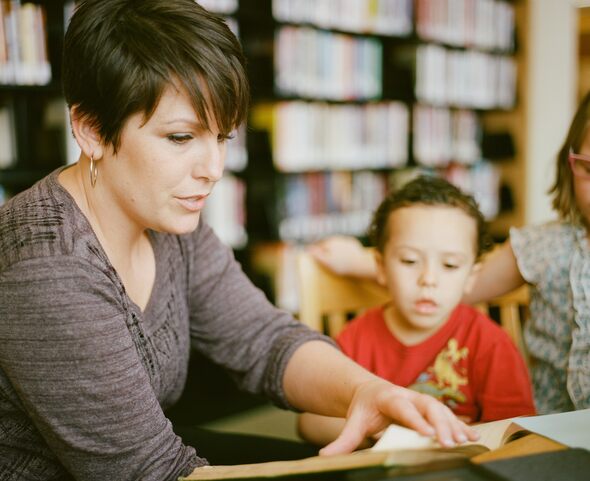Retain Teachers by Improving School Working Conditions
Every parent in the US is aware of a growing problem in our K-12 education system: teacher turnover. The root causes for this problem are complex and many. Schools’ efforts to recover from the effects of COVID-19-related school closures and transitions into and out of online schooling are taking a toll on teachers.
From increased student mental health needs to learning loss to a divisive political climate in classrooms, teachers are bearing a heavy burden. An overall shortage of trained teachers puts further strain on school staff.
Public school teachers are leaving their posts in high numbers to move to different schools or leave the profession altogether. To provide the best quality education to their students, schools must fill the vacancies that turnover, attrition, and other factors (such as increasing enrollment or expanded curriculums) create.
A positive and safe school environment is the antidote to this phenomenon. Teachers who feel safe, supported, and respected in their workplace are more likely to stay. The key to retention, then, is an investment in teachers. Efforts to promote a positive and inclusive school climate, address disciplinary issues, and ensure staff members’ physical and emotional safety positively impact teacher retention.
What Does Job Satisfaction Look Like for Teachers?
In 2022, job satisfaction among teachers hit an all-time low. More than half of the teachers interviewed stated that they likely wouldn’t advise their younger self to pursue a career in teaching. But teachers’ job satisfaction rebounded somewhat in 2023; studies describe a battered workforce that’s regaining momentum. Two-thirds of teachers say they’re satisfied with their jobs, up from 56 percent in 2022. This may be partly due to policymakers’ growing awareness that policy decisions can effectively improve workplace conditions at the school and district levels. According to the National Center for Education Statistics, focusing on workplace conditions is a feasible way to improve teacher satisfaction.
The following concrete factors are central to creating favorable workplace conditions in schools:
- safe working environment
- supportive administration
- teachers’ feelings of autonomy
- support for teachers’ involvement in school-wide policy decisions
- environment encouraging equal representation for minorities
Ensuring these factors are in place demonstrates administrative support for teaching staff. This investment in teachers creates a working environment that keeps teachers coming to work. Safety, support, autonomy, and professionalism are important to teachers. They are, therefore, critical factors in retaining skilled teaching staff.
Factors that Promote Teacher Retention
Compensation and Benefits
Raising pay could help improve retention rates, teachers say. Analyses of job satisfaction among US teachers indicate that salary and benefits contribute positively to teacher satisfaction: the higher the pay and the greater the benefits, the higher the satisfaction score. But in a 2022 survey, 74 percent of teachers indicated that they did not believe that their salary was commensurate to their work; this number was up from 65 percent in 2012. Increased compensation has a positive impact on job satisfaction and strengthens the pipeline of qualified teachers entering American school districts; when people see the profession as sustainable, higher numbers of quality candidates will join the education workforce.
Reasonable Workloads
In the wake of the changes the COVID-19 pandemic forced upon teachers, many are experiencing burnout. Staffing shortages and increased student needs have placed very high demands upon teachers. Many say they feel new expectations are constantly being put on their plates—but nothing is taken off. School districts must work to hire and retain both teachers and other staff to ensure that workloads are distributed among staff. By understanding and working to mitigate teachers’ increased burden, administrators can minimize teacher burnout and improve retention rates.
Professional Development Opportunities
Studies show that professional development positively impacts job satisfaction among educators. Although school administrations are generally accommodating, barriers to fully realizing professional development remain. Educators are fully credentialed professionals in their field, and they, like other professionals, seek to increase their skills and knowledge. School administrators indicate their esteem for their workforce by supporting teachers with professional development opportunities. More professional development for teachers also results in a highly skilled group of teachers who can collaborate with administrators and improve the school climate overall.

School Leadership and Support
Today’s teachers are under stress and seek their administrators’ support. When asked how schools and districts can support their mental well-being, many teachers request pay raises, smaller class sizes, better support for student discipline, fewer administrative burdens such as meetings and paperwork, and more acknowledgment for excellent and hard work. Teachers are invested in their students’ success. They desire that their administrators demonstrate the same level of investment in teachers’ success by enacting policies focused on teachers’ well-being.
Recognition and Appreciation
Teachers understand their jobs will be challenging, particularly in today’s environment. Administrators improve staff working conditions by acknowledging this challenge and publicly recognizing effective teachers. Recognizing excellence in teaching supports improved student learning and faculty retention. Educators are more likely to become excellent, scholarly teachers when their school culture promotes development.
Healthy Work-Life Balance
Excessive workload and the lack of a work-life balance remain key issues in the field of education. These factors drive poor mental health for school staff, a challenge to teacher retention. While teachers can work to create healthy boundaries around their work hours and responsibilities, administrators can also work to create and respect these boundaries. Administrators can support teachers’ mental health by clarifying staff responsibilities and adhering to these expectations.
School Safety: the Baseline for Teacher Satisfaction
Creating a safe environment is perhaps the most fundamental way administrators can support their teachers. A safe and secure school environment is a prerequisite for creating good working conditions for school staff. In one survey, roughly half of the teachers, regardless of gender or race, felt that physical security measures at their school (which most commonly include locks, ID badges, cameras, and security staff) positively affected the school climate. Teachers who feel safe at school are more likely to stay. Schools can make their buildings safer by implementing enhanced security measures:
- monitored building access
- security cameras
- wearable mobile panic buttons
- visitor check-in procedures
- collaboration with law enforcement
CrisisAlert School Alert System Creates a Climate of Safety
Teachers who are easily able to summon help in an emergency gain a sense of security. CrisisAlert’s wearable mobile panic buttons enable teachers to discreetly request help from designated administrators or staff members even as they continue to intervene in an ongoing incident. Teachers who wear mobile panic buttons are never “alone” in a crisis; the sense of security teachers gain from these devices contributes to a positive working environment. Administrations that invest in these security systems show their support for school staff.
CrisisAlert also features Enhanced Visitor Management, which enables schools to perform:
- real-time locating of visitors
- location mapping to show visitor location
- visitor analytics that enables informed decisions on visitor policies, vendor billing, and approved visitor lists
By monitoring visitors carefully, schools create an environment with minimal interruptions. This contributes to a climate of safety that is the groundwork upon which administrators can implement other measures that improve working conditions. Building a supportive and positive working environment for teachers starts with safety and security. After all, teachers who feel safe are free to focus their energy on the reasons they became teachers in the first place: classroom teaching and student engagement.



 Katie Brenneman is a passionate writer specializing in education, mental health, family lifestyle and online safety. When she isn’t writing, you can find her with her nose buried in a book or hiking with her dog, Charlie. You can follow her on
Katie Brenneman is a passionate writer specializing in education, mental health, family lifestyle and online safety. When she isn’t writing, you can find her with her nose buried in a book or hiking with her dog, Charlie. You can follow her on 






